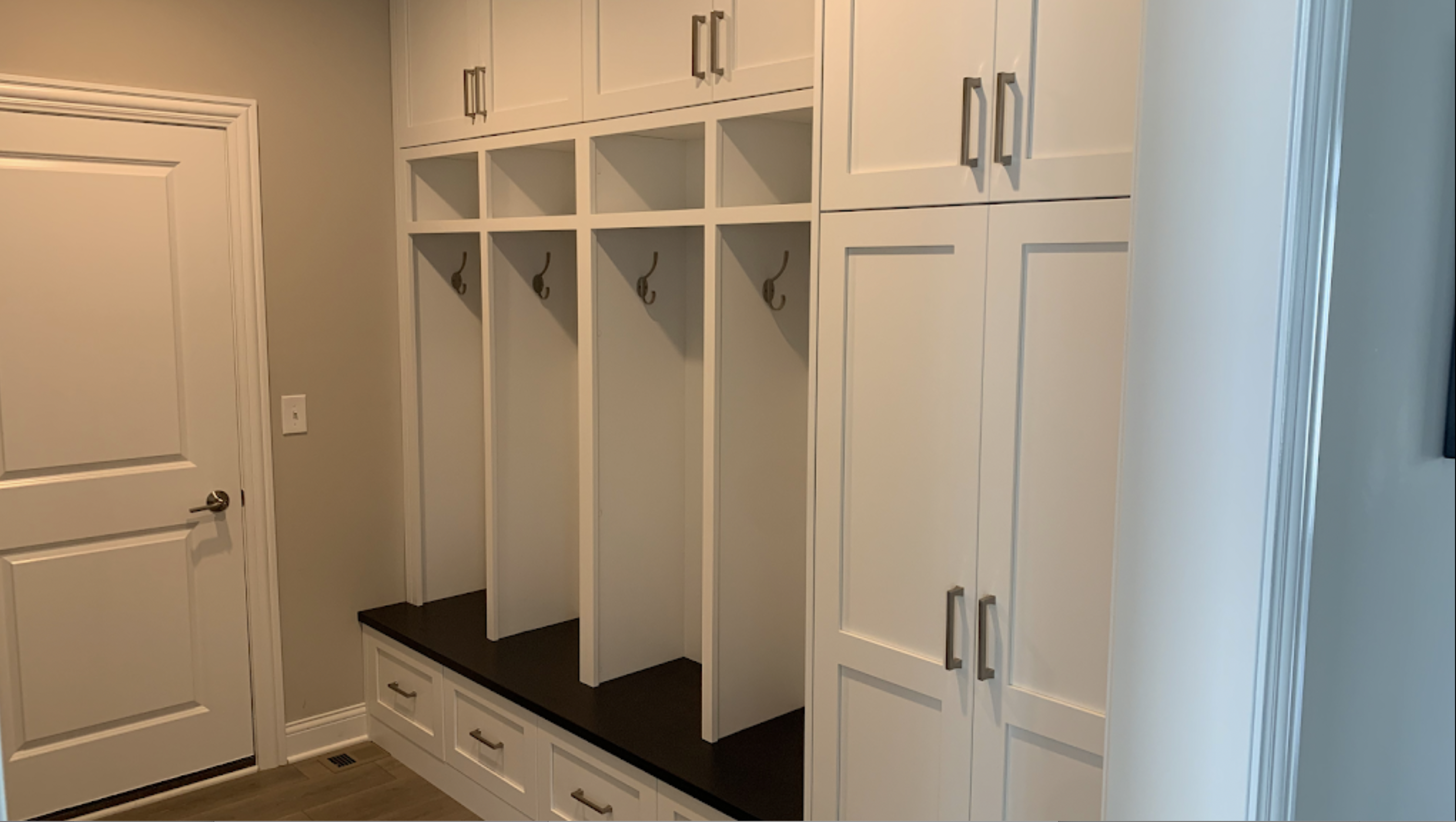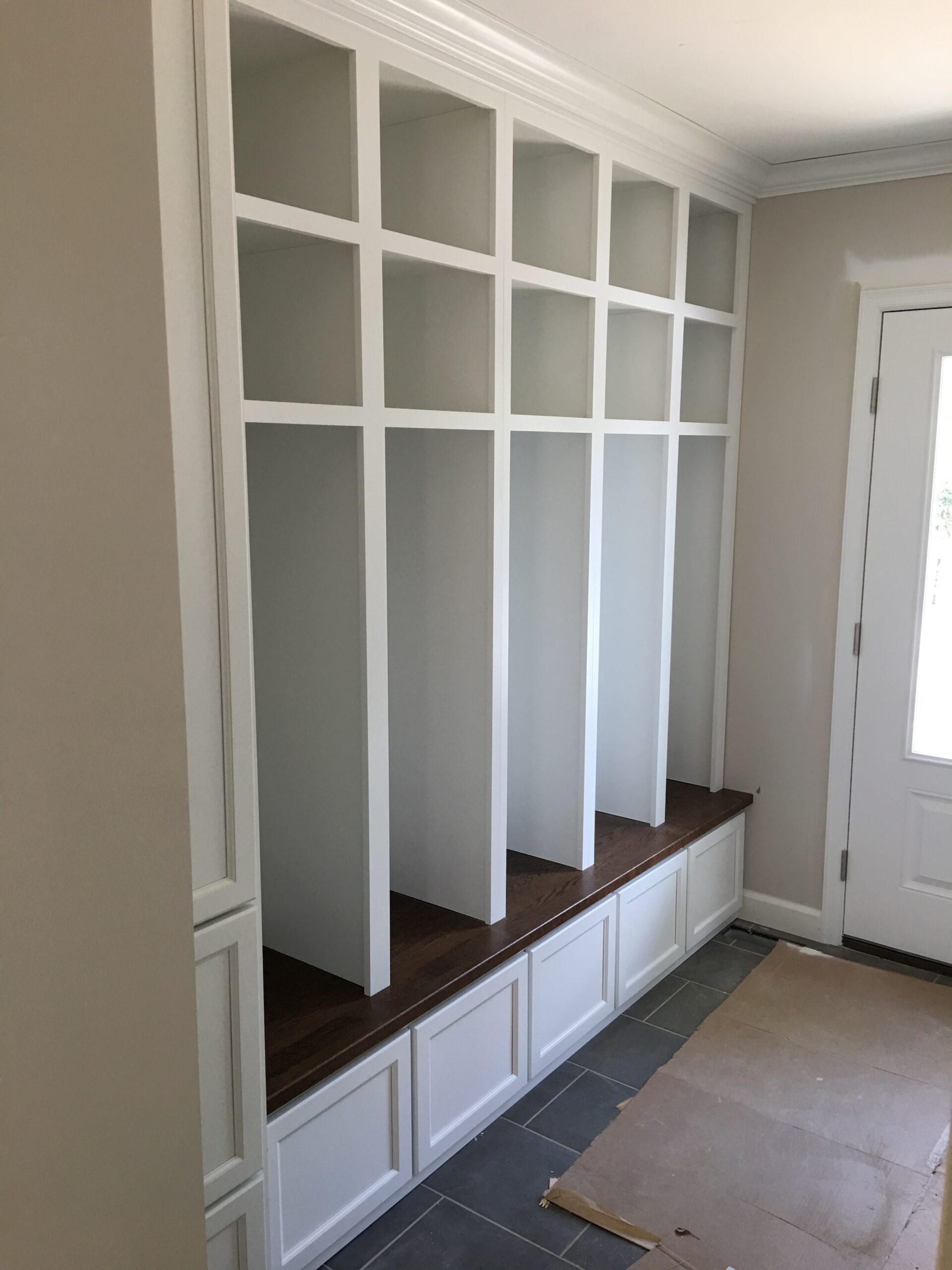What are the key considerations for choosing between an open cubby or closed-door design for mudroom custom cabinets?
When deciding between an open cubby or closed-door design for mudroom custom cabinets, there are several key considerations to remember. Closed-door cabinets offer the advantage of concealing stored items and providing a neater appearance. They can help create a clutter-free space and hide any mess. On the other hand, open cubbies, especially near a home’s entryway, provide easy access to frequently used items and allow for quick organization. Ultimately, the choice depends on personal preference, the desired level of organization, and the intended aesthetic of the mudroom space.
Depending on the style of your house, you could also incorporate some older-styled ideas, such as lockers made out of high-quality wood. This is a design idea that could work in just about any aesthetic.
What are the ideal dimensions for mudroom custom cabinets to ensure optimal storage and organization?
To ensure optimal storage and organization for your custom mudroom design, dimensions can vary based on specific needs and available space.
1. Mudroom Size: A mudroom should ideally be at least 5 feet wide and 11 feet long to accommodate various features like benches, cubbies, closets, and cabinets. This size allows for comfortable entry and movement within the space.
2. Cabinet Depth: The depth of mudroom custom cabinets typically ranges between 12 and 18 inches. This provides enough space to store shoes, bags, and other handy items, allowing easy access and visibility.
3. Bench Dimensions: The standard depth is usually between 14 and 17 inches, if incorporating a bench into the mudroom cabinets. This depth allows for comfortable seating without compromising on storage capacity.
4. Cubby Dimensions: The width of mudroom cubbies can vary depending on individual preferences. Commonly, each cubby is around 14 inches wide, 14 inches tall, and 16 inches deep. These dimensions can be adjusted to accommodate specific storage needs and the size of baskets or bins used.
How can mudroom custom cabinets be designed to maximize both functionality and aesthetic appeal?
Designing mudroom custom cabinets to maximize functionality and aesthetic appeal requires careful planning and consideration. Here are some key tips to achieve both:
1. Assess storage needs: Consider the types of items you want to store and determine the number of shelves, cubbies, drawers, or hanging space required.
2. Optimize space: Utilize vertical space with tall cabinets or shelving units. Install hooks, racks, or pegboards on walls for additional storage options. Include adjustable shelves for flexible organization.
3. Incorporate functional features: Add a built-in mudroom bench with storage underneath, pull-out drawers, or tilt-out bins for putting on, taking off, and storing boots and shoes. Also, as your mudroom is likely near an entryway, include ample accommodation to hang keys, winter coats, jackets, hats, kids’ backpacks, and all the things family members routinely grab on the way out or discard on the way in.
4. Choose durable materials: Opt for sturdy wood, metal, or composite materials that can withstand heavy use and are easy to maintain.
5. Consider aesthetics: Choose cabinet finishes, colors, and hardware that complement the existing decor. Incorporate decorative elements such as molding, trim, or decorative panels.
6. Ensure proper lighting: Incorporate task lighting above work surfaces or in closets. Consider natural light sources like windows or skylights.
7. Maintain organization: Plan for organization systems within the cabinets, such as dividers, bins, or labels.
What practical and innovative mudroom custom cabinet ideas provide efficient storage solutions?
Custom Shelving and Cabinets: Incorporate custom shelving and cabinets that are designed specifically for your mudroom space. This allows you to maximize storage capacity while keeping items organized and easily accessible.
1. Cubbies and Baskets: Install cubbies with individual compartments or baskets to separate and store items like shoes, bags, and accessories. Labeling the cubbies or using different-sized baskets can further enhance organization.
2. Pull-Out Drawers and Shelves: Utilize pull-out drawers and shelves in your mudroom cabinets for efficient storage. These features provide easy access to items stored at the back of the cabinets, maximizing the use of space.
3. Built-In Bench with Storage: Consider incorporating a built-in bench with storage underneath. This provides a seating area while also offering additional storage space for shoes, bags, or seasonal items.
4. Overhead Storage: Take advantage of vertical space by installing overhead storage compartments or cabinets. This is particularly useful for storing items that are not frequently accessed.

